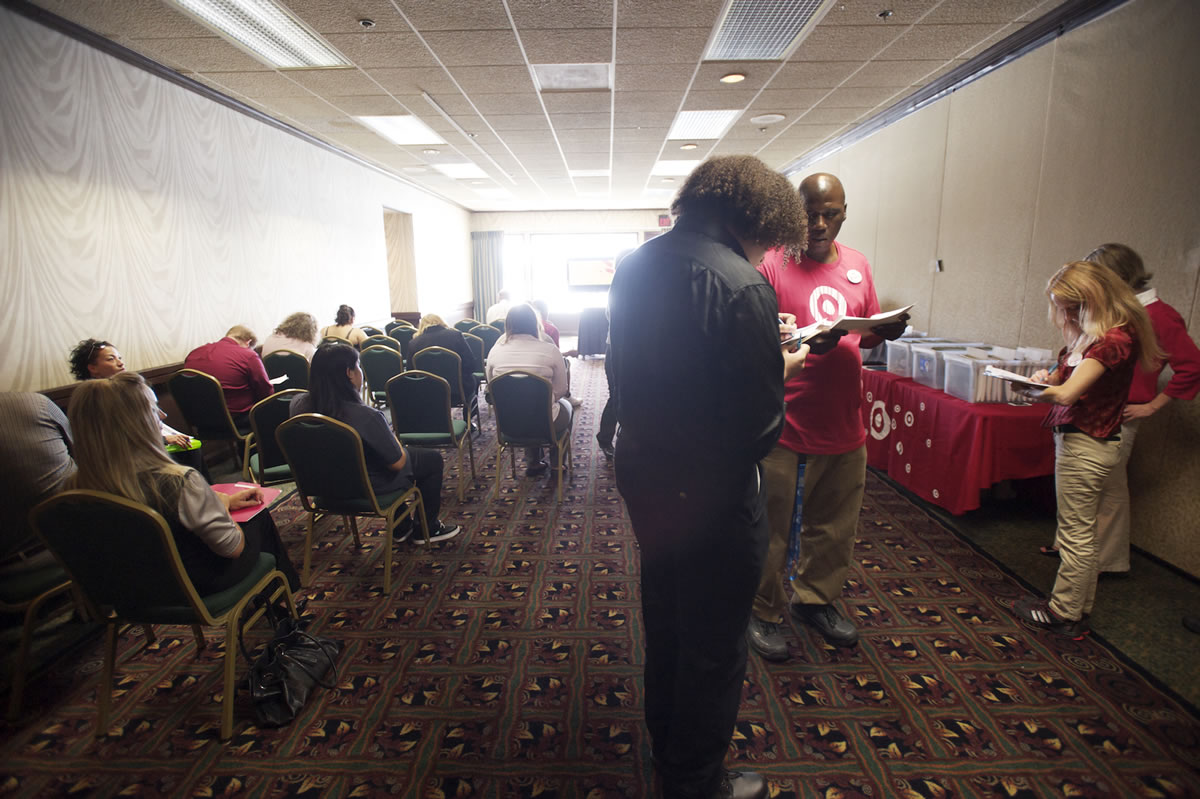WASHINGTON — Is the U.S. job market as dismal as Republican presidential nominee Mitt Romney says?
Or is it steadily improving as President Barack Obama contends?
Not to dodge the question, but both men are correct. It’s all about how you slice the data.
Romney and his Republican allies like to point to the unemployment rate. It’s stuck at 8.3 percent, compared with 7.8 percent when Obama took office. Most economists say “normal” unemployment is 6 percent or less.
Obama prefers to stress the more than 4 million jobs the economy has added in the past 21/2 years.
Neither figure fully illustrates the state of the job market — the pivotal issue for many voters in the final stretch of the election season. You have to consider other numbers, too.
What about the number of people who’ve given up looking for work and so aren’t counted as unemployed?
Or the pace of layoffs?
What about the level of job openings advertised?
The job market began strengthening in mid-2010. That was about a year after the Great Recession officially ended. The gains since then have been steady but achingly slow.
Here’s an overview of key numbers and the stories they tell:
• UNEMPLOYMENT
Romney and other Republicans have stressed that the unemployment rate has topped 8 percent for 42 straight months. That’s the longest such stretch since government record-keeping began in 1948.
No president since World War II has won re-election with such a high rate. President Gerald Ford lost to Jimmy Carter in 1976, when the rate was 7.8 percent. President Carter was unseated by Ronald Reagan in 1980, when it was 7.5 percent.
Reagan won a landslide re-election in 1984, when unemployment was a still-lofty 7.2 percent. But the rate had tumbled from a peak of 10.8 percent in December 1982.
A similar trend could benefit Obama. Unemployment is historically high, but it’s down from a peak of 10 percent in October 2009. Some economists argue that the trend in the unemployment rate in an election year affects voters more than the rate itself does. Presidents have won re-election even when unemployment was high, as long as the rate was trending down.
That said, Obama has a problem: The unemployment rate has stopped declining recently. It’s now where it was in January. That could all change in coming months. Three more jobs reports will be issued before the election, including the August numbers that will be released Friday.
• JOBS
Obama and other Democrats point out that the private sector has added jobs for 29 straight months. And over that time, 4.5 million jobs have been added. By contrast, over roughly the same period after the first year of President George W. Bush’s first term, only 1.3 million private-sector jobs were added.
But the positive trend for Obama depends on a carefully selected time frame. It counts job gains dating from February 2010. It ignores Obama’s first year in office, when employers shed an average of 357,000 jobs a month. And by counting only private-sector jobs, Obama’s claim excludes hundreds of thousands of layoffs by local and state governments.
Since Obama took office, the overall economy — including the public sector — has lost 316,000 jobs. Private employers have added only 332,000 jobs. Put all that together, and you’re a long way from 4.5 million.
The administration’s supporters argue that it’s fair to exclude the early part of his term. That’s because his economic policies, particularly the $824 billion stimulus package, didn’t kick in until months after his inauguration.
Even counting the gains of the past 21/2 years, the economy still has 4.7 million fewer jobs than it did in December 2007, when the recession began.
• THE UNDEREMPLOYED
Many analysts point out that the unemployment rate would be even higher if it included millions of Americans who have given up looking for work. (The government counts people as unemployed only if they’re looking for a job.)
Nearly 12.8 million people were unemployed in July. But Romney and his running mate, Rep. Paul Ryan, prefer to cite a different figure: One that also includes people no longer looking for a job and people working part time who would
prefer full-time work.
When you add up those groups, plus the unemployed, you end up with 23.5 million. That produces an “under-employment” rate of 15 percent.
An Associated Press analysis this year found that roughly half of college graduates younger than 25 are unemployed or underemployed.
• LAYOFFS
Since Obama was inaugurated, layoffs have plunged.
More than 800,000 Americans lost their jobs in January 2009, the month he took office. That was the largest one-month drop in more than 60 years. The economy shed 600,000 or more jobs each month from November 2008 through April 2009. A total of 4.5 million jobs were lost.
In the last week of March 2009, 667,000 Americans applied for unemployment benefits, the most in more than 26 years.
Since then, layoffs have dwindled. The economy is steadily adding jobs, however modestly. And the number of people seeking unemployment benefits each week is averaging about 370,000. Still, most economists say that in a healthy economy, applications for unemployment aid would fall to roughly 325,000.



